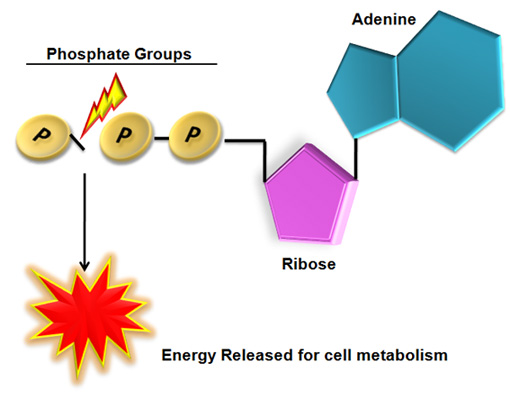How does atp store and release energy?
1 Answer
Adenosine triphosphate (ATP) consists of an adenosine molecule bonded to three phophate groups in a row. In a process called cellular respiration, chemical energy in food is converted into chemical energy that the cell can use, and stores it in molecules of ATP. This occurs when a molecule of adenosine diphosphate (ADP) uses the energy released during cellular respiration to bond with a third phosphate group, becoming a molecule of ATP. So the energy from cellular respiration is stored in the bond between the 2nd and 3rd phosphate groups of ATP. When the cell needs energy to do work, ATP loses its 3rd phosphate group, releasing energy stored in the bond that the cell can use to do work. Now its back to being ADP and is ready to store the energy from respiration by bonding with a 3rd phosphate group. ADP and ATP constantly convert back and forth in this manner.
 )
)
 )
)


